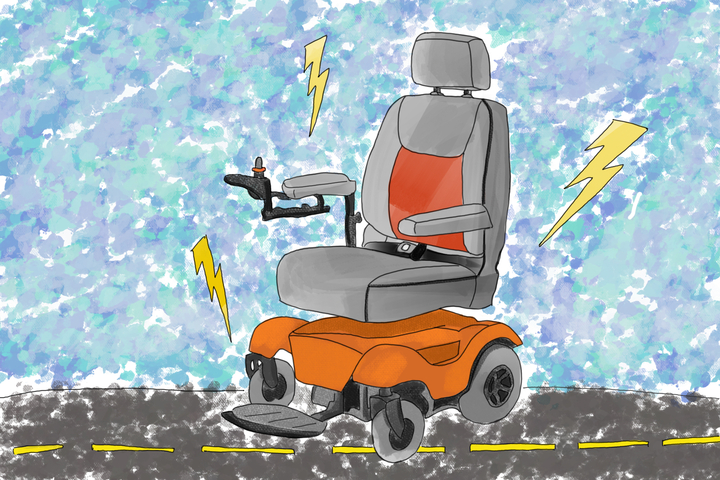NU researchers seek to increase accessibility of motorized wheelchairs
Several researchers at Northwestern are collaborating to build wheelchairs that could be accessible to a wider population, including those who may experience limited upper limb mobility.
March 7, 2023
Wheelchairs have come a long way from the manual, self-propelled variety, with some motorized ones using joysticks or keypads to propel the devices.
For some, though, motorized wheelchairs aren’t widely accessible. A collaboration between researchers at the Assistive & Rehabilitation Robotics Laboratory, or “argallab,” and the Rogers Research Group is trying to fix that.
“The power wheelchair facilitates independent mobility for many millions of people, but there remain others for whom this access is either severely limited or entirely absent,” project lead and McCormick School of Engineering Prof. Brenna Argall said. “The aim of this project is to accelerate people’s access to power mobility and wheelchairs.”
While most electric wheelchairs require users to physically interact with an interface to convey their desired movement, Argall said the group aims to reverse the mechanism by capturing control signals from the human body and translating them into machine movement.
The project has three components, called thrusts. Third-year mechanical engineering Ph.D. student Andrew Thompson is working on thrust one, which is developing a novel interface to control the wheelchair.
“Thrust one is mainly focused on this idea of ‘how can we convert the residual body motions into essentially a joystick at some level?’” Thompson said.
Thrust two focuses on communication between the interface and the wheelchair, while thrust three aims to provide active assistance from user feedback.
The Rogers Research Group, led by McCormick Prof. John Rogers, builds wireless sensors, or soft and flexible skin interfaces that measure body processes, like cardiac and respiratory events, for the wheelchairs.
Rogers said the sensors used in thrust one would be strategically placed to capture residual body motions for the assistive device.
“The subject would learn how to control the wheelchair by moving different parts of their body,” he said.
For the project, argallab focuses on developing algorithms to transmit the data and commands to the wheelchair. Ultimately, through collaboration with the Shirley Ryan AbilityLab, the researchers aim to test the device on patients.
Argall said the project recently received a grant through the National Science Foundation’s Convergence Accelerator program, which supports projects that accelerate the translation of research into real-world technology.
There are two phases in the program: Phase 1, where a team builds a project, and Phase 2, where the group receives additional funding and support.
The labs, which are currently building a prototype, plan to submit a Phase 2 proposal by the end of the summer.
“The idea is to use that funding mechanism to develop this technology to a stage that would ultimately allow for its commercial availability to the affected communities,” Rogers said.
Researchers on the project also collaborated with LUCI, an industrial partner which aims to design wheelchairs safe for anybody to use without additional barriers.
LUCI’s wheelchair provides subtractive assistance, which removes part of the control signal to slow or steer the vehicle.
“It won’t ever add to the signal, so it doesn’t provide additive additive assistance that will drive you around obstacles,” Argall said. “One of the goals of this project is to incorporate active assistance to a LUCI system.”
Thompson added that many doors fail to be compliant with the Americans with Disabilities Act and may not accommodate a wheelchair. However, even if these entrances are compliant, they may still pose a challenge to the user.
By implementing programmatic behaviors — such as door detection — to a LUCI system’s safety design, Thompson said some of these challenges can be addressed.
“Doors that are ADA compliant are basically just wide enough (to fit a wheelchair),” Thompson said. “A little bit of assistance can be the difference between scraping the sides of the chair — which can damage the chair or potentially damage the doorframe — or potentially damage the driver — which we definitely don’t want.”
Email: [email protected]
Twitter: @amittal27
Related Stories:
— Northwestern professor Brenna Argall featured on CBS’s “Mission Unstoppable”
— In Focus: Physical accessibility limits students on Northwestern’s Evanston campus
— Northwestern researchers develop smallest-ever walking robot in crab shape


